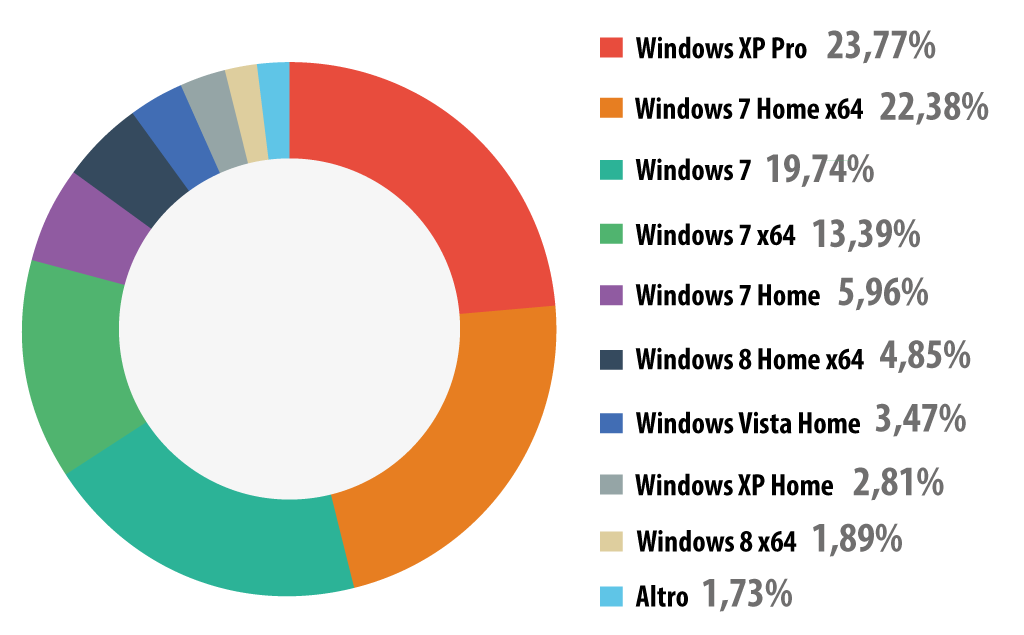The End of Microsoft Support for Windows XP…and What It Means for Your Business!
What’s all the fuss about?
On April 8—that’s less than a week from now—Microsoft will discontinue updates and support services for Windows XP, except in cases where organizations are paying for a continuation of the service. After two previous extensions, there is nothing to suggest that they are bluffing this time.
Although it is now 13 years old, Windows XP remains extremely popular. In fact, it continues to be the world’s second most popular operating system, running on more than a third of computers around the world.
Microsoft says all its software products have a lifespan, and XP has been on borrowed time for a while. In 2002, they made it very clear that support for Windows XP would stop in 2012, but Microsoft has extended that deadline twice due to popular demand.
In theory it is possible for those who decide to update from XP to buy operating systems made by other manufacturers like Apple and Linux. But, while XP was a great product, what has come out since then is better, more secure, and easier to maintain. The time has come for Microsoft and users to refocus resources on those newer, up-to-date systems.
In a 25-year-old industry, 13 years is a very long time for one product to be supported, and it is only reasonable for Microsoft to look to the future.

What’s at risk?
Well, if you are running Windows XP on your PC or laptop, it will become more exposed to threats starting April 8, 2014. It is possible that hackers will look at updates being pushed out for Windows 7 and 8 into the future, and reverse engineer them to work out what weaknesses they are patching. They will then go and look at Windows XP to see if they can find similar holes that haven’t been patched. Windows XP Professional for Embedded Systems, which is a special version used in machines like cash registers and ticket machines, will be supported until the end of 2016. Support for Microsoft’s word processing, spreadsheet and presentation package, Office 2003, is also ending on April 8, 2014.

Can antivirus software protect me?
Several third-party antivirus publishers have promised to continue supporting Windows XP after the cut-off date, and Microsoft has said that its own Security Essentials product will continue to receive signature updates “for a limited time.” This can protect you against many types of attack, such as those that target your web browser or email client. However, if hackers exploit low-level vulnerabilities in the operating system, they could theoretically circumvent or disable your antivirus defenses. Some experts suspect that online criminals are already planning such an attack and are simply waiting for XP updates to end before unleashing it.
What are my options?
Hold out
If you want to take your chances and hold on to XP (which I don’t recommend), make sure you fully update your XP system between now and Tuesday and limit internet access to your computer. However, Microsoft and most IT experts think this is a bad idea.
Upgrade
You could buy a new operating system and upgrade your computer, but a lot of old hardware won’t run the latest operating systems. The easiest way is to bite the bullet and go and buy a completely new machine with a modern operating system installed on it.
If you’re worried about backwards compatibility for your older software on your new machine, virtual machines are an excellent way to continue using software that requires Windows XP while also upgrading to a newer version of Windows. They allow you to run Windows XP in an isolated container, placing an entire Windows XP system into a window on your desktop. Windows 7 Professional includes Windows XP Mode for just this reason, offering businesses and other professional users the ability to easily set up a Windows XP virtual machine without buying an additional Windows XP license. Windows XP Mode is not included on Windows 8 or even Windows 7 Home.
If you want to use Windows XP in a virtual machine, you’ll have to get a boxed copy of Windows XP (an old one will work) and install it inside a virtual machine. You don’t have to buy virtual machine software—the free VirtualBox and VMware Player will both work fine. If you are a big business with deep pockets and no options, you could pay Microsoft or someone else to continue to support your older machines.
Are there tools to help me migrate?
Microsoft has announced a partnership with Laplink to provide a new free tool allowing individuals to easily copy files and settings from a Windows XP PC to a device running Windows 7 or later. While it’s not aimed at business use, this tool could prove to be a great way for your family and friends to easily make the leap from XP to Windows 7 or 8.
XP infection rates
In the second half of 2012, protected Windows XP SP2 computers had an infection rate of 0.42%, while 32-bit Windows 8 machines and 64-bit Windows 8 machines had infection rates of 0.05% and 0.02% respectively. With no real-time anti-malware installed, these figures went up to 1.56% for Windows XP and 0.27% for 64-bit Windows 8. No data is available for 32-bit Windows 8. These figures are a summary of the telemetry data from Microsoft’s Malicious Software Removal Tool (MSRT), which is run on millions of computers every Patch Tuesday. See more of them in Microsoft Security Intelligence Report Volume 14.
Operating systems that are 64-bit are substantially more secure than their 32-bit equivalents, with the exception of Windows Vista, for unknown reasons. It’s interesting how relatively insecure Windows 7 RTM compares to Vista SP2 or Windows 7 SP1, but it’s blindingly obvious that Windows 8 is far more secure than any previous version of Windows.

The takeaway
Even though infections and virus threats are becoming increasingly more common—they are up 182% from 2012—Windows 7 is still far less likely to be infected than Windows XP if you’re running anti-malware protection. If you don’t have real-time malware protection in place, Windows XP and Windows 7 are about on par for infection rates.
It’s also worth mentioning here that Windows 8 comes with real-time protection built in and turned on by default, so its infection rates are incredibly low—you’d have to consciously turn off Windows Defender to reach any significant infection rate.
